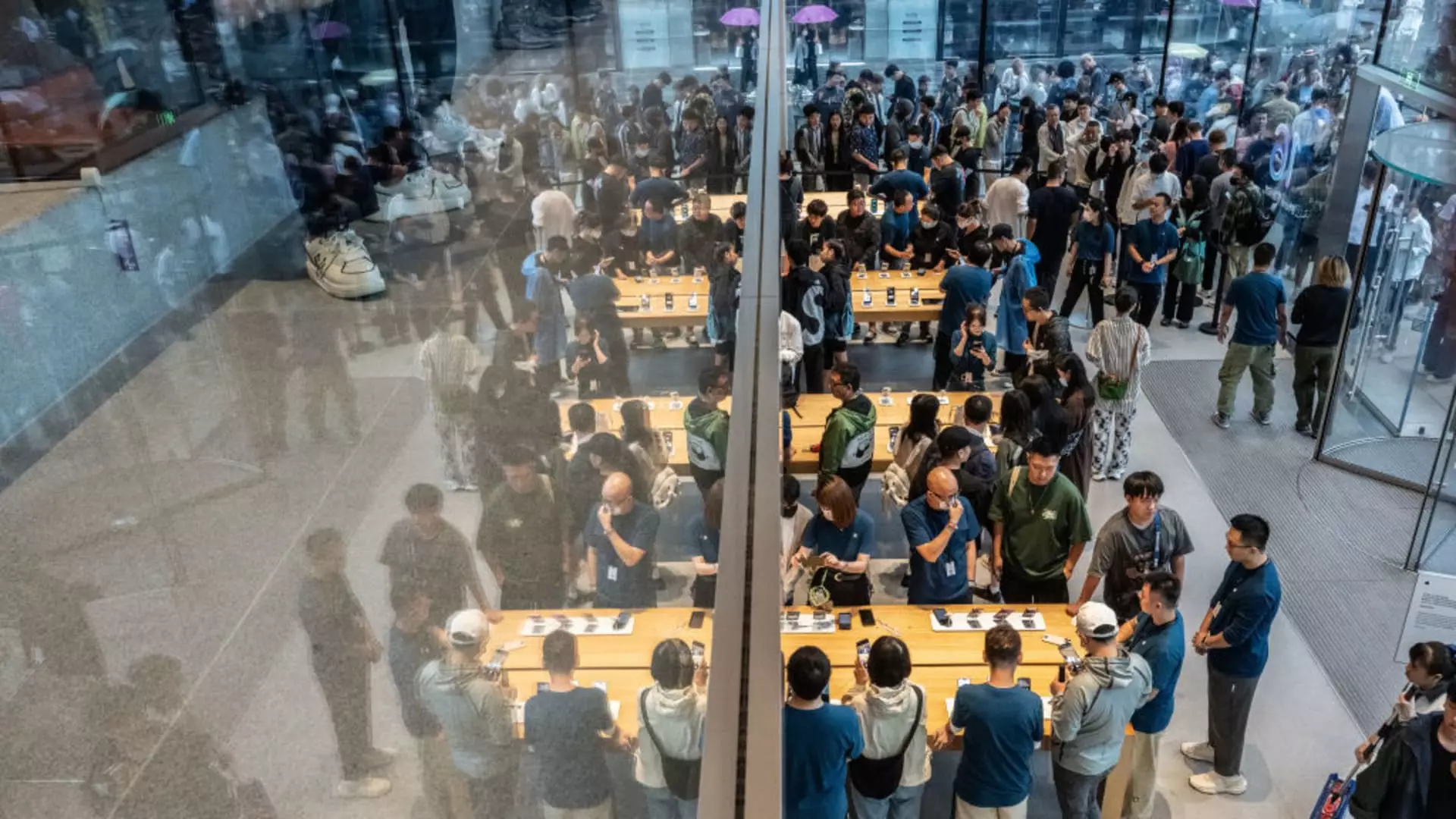In the dynamic and fiercely competitive smartphone market of China, two tech behemoths, Apple and Huawei, have intrigued consumers with their newly launched devices—the iPhone 16 and the Huawei Mate XT. As affluent consumers grapple with choices between the two flagship offerings, a deeper understanding of their preferences reveals a complex interplay between brand loyalty, pricing strategies, and consumer sentiment in an era defined by technology and geopolitical tensions.
Recent data has indicated a seismic shift in the Chinese smartphone landscape. For the first time in many years, U.S.-based Apple found itself displaced from the top five smartphone manufacturers in China. Amidst this upheaval, Huawei, which had suffered significant setbacks due to U.S. sanctions imposed in 2019, managed to claw its way back up the rankings, securing a commendable fourth position in the smartphone market. The technology landscape is not just about shifting numbers; it tells a story of resilience and adaptability. This shift signals a growing preference for domestic brands bolstered by national pride and innovative offerings, prompting Apple to rethink its strategies within the lucrative Chinese market.
The launch of the iPhone 16 series—priced significantly lower than the luxury Huawei Mate XT—exemplifies the contrasting approaches between the two brands. While the iPhone 16 starts at $799, the Mate XT demands more than $2,800, creating an evident price disparity. This stark difference highlights not only the premium positioning of Huawei’s trifold device but also the consumer inclination towards perceived value, functionality, and status. Observations from local retail environments signify that a considerable percentage of Apple users are equally intrigued by Huawei’s offerings, challenging the notion of unwavering brand loyalty.
Amidst these developments, consumer preferences reflect changing attitudes towards technology. During a recent survey at both Apple and Huawei stores, it was evident that a significant number of consumers expressed interest in both the iPhone 16 and Mate XT. This suggests that many are not solely loyal to one brand but are motivated by specific features and functionalities. For instance, a consumer named Yang, who currently uses an iPhone, expressed interest in the innovative trifold features of Huawei’s latest flagship. His willingness to explore a competing product underscores the growing importance of innovation over brand allegiance in making purchasing decisions.
Further illustrating this trend, the reselling market has thrived, with the Huawei Mate XT reportedly commanding prices upwards of 60,000 yuan ($8,520) on secondhand platforms. This indicates not only a demand for the device but also the notion that many consumers view luxury smartphones as investment pieces. Such phenomena suggest that smartphones are no longer merely communication tools but are deeply entwined with status and societal perceptions, driving consumers to seek the latest and most unique offerings.
The launch events for both devices presented an intriguing contrast. Enthusiastic lines outside Apple stores where eager consumers camped as early as 5:30 a.m. painted a picture of a brand still capable of generating excitement. In stark contrast, the absence of long queues outside Huawei stores in major cities indicated a different consumer engagement strategy. Instead of dramatic launches, Huawei opted for a reserved approach, focusing on fulfilling preorders rather than creating a buzz.
This dichotomy in consumer behavior highlights the unique challenges each brand faces in maintaining relevance in the ever-evolving tech landscape. While Apple manages to draw crowds with its established reputation and product reliability, Huawei’s approach appears targeted at specific consumer segments that prioritize exclusive features and innovation. The challenge for Huawei will be to convert curiosity into sales and build a solid consumer base.
The smartphone market in China presents a fascinating case study of brand dynamics, consumer preferences, and the ongoing battle between international and domestic players. As Huawei continues to ramp up its offerings in the face of adversity, and Apple seeks to regain its foothold in the market, both brands will need to brace for an animated competition that may further reshape consumer sentiments. The pursuit of technological superiority and consumer loyalty appears to be far from over, setting the stage for an intriguing future in this competitive arena.

